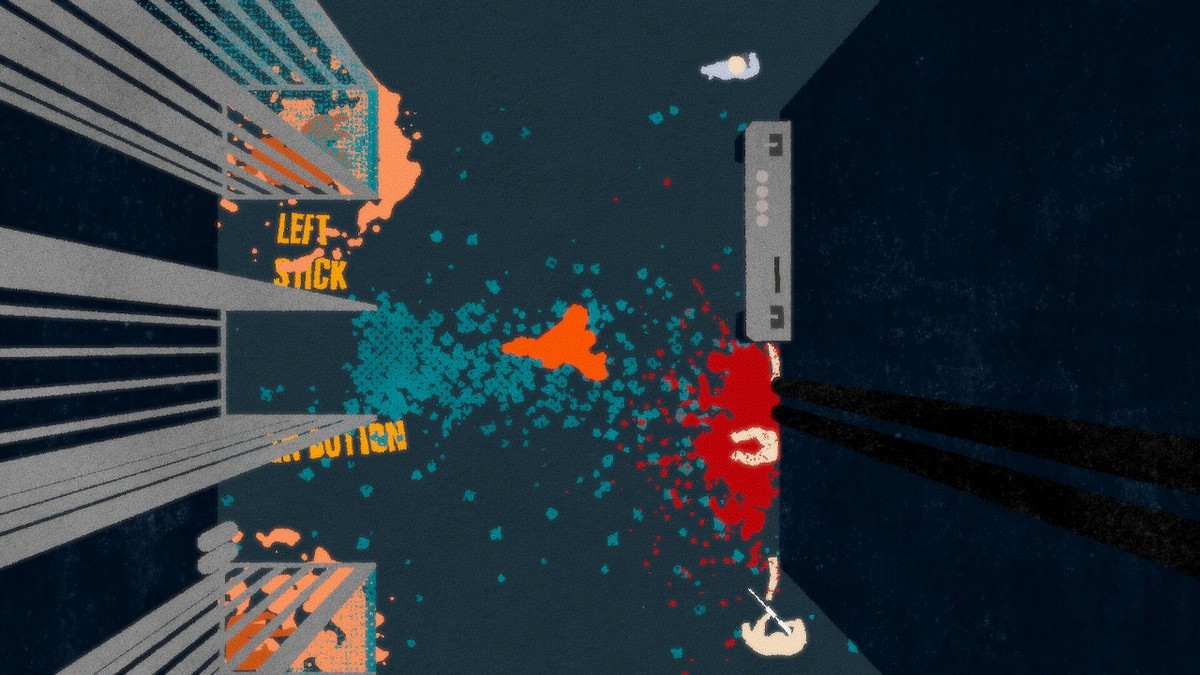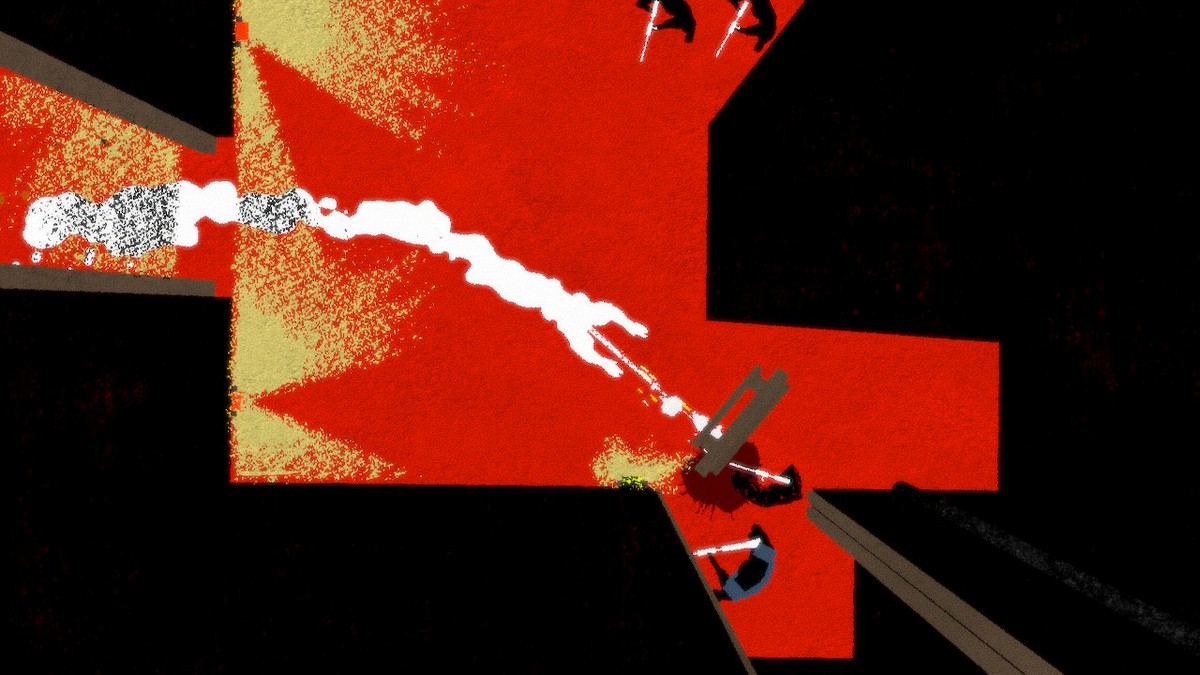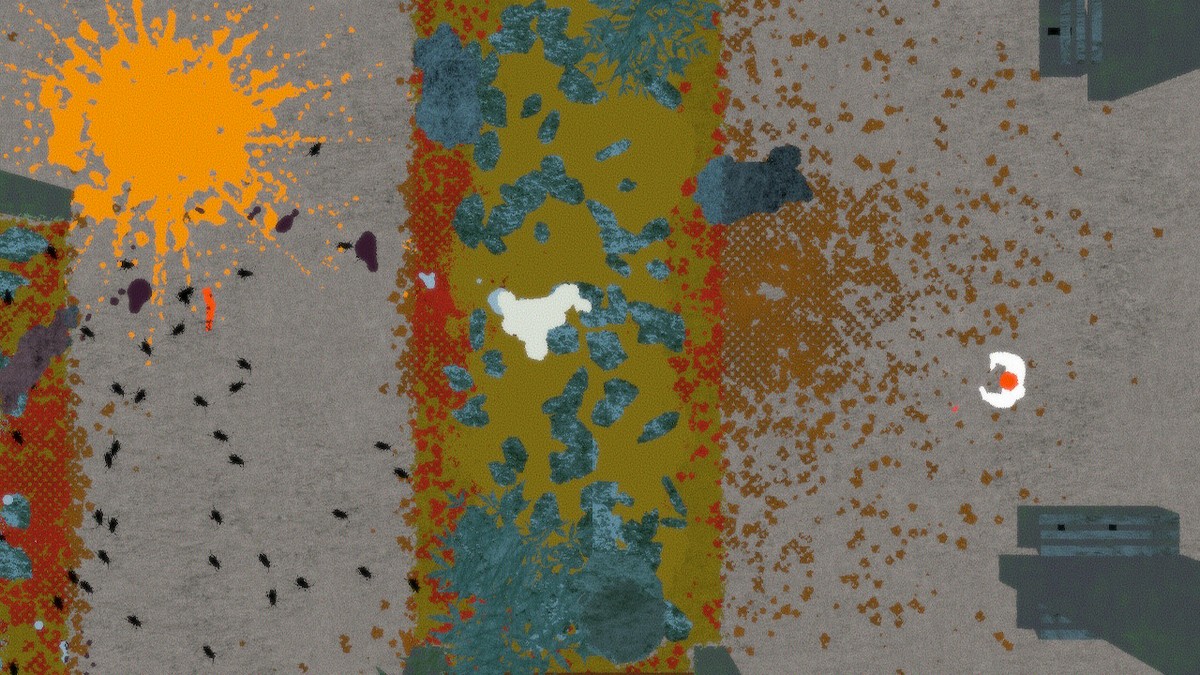Ape Out Review
Gorilla warfare.

We’ve had snakes on a plane. We’ve had sharks in a tornado. How about a gorilla in a research facility or high-rise skyscraper? Now we’re talking.
Ape Out is smashing. Smashing doors off of their hinges, windows into smithereens and skulls into walls. You’re an ape, an ape who wants out, who apes out, and by any means necessary, gets out. Locked in a cage? Break it apart. Guards blocking your exit? Hurl them ferociously against the walls. Guns pointed in your direction? Grab a bystander to use as a reluctant body shield.

The most obvious inspiration is Hotline Miami, with its frenetic top-down action and try-one-more-time structure. But the species of protagonist isn’t the only thing that sets the two apart. Your sole objective here is to reach the exit. You don’t have to kill anyone – though the likelihood is you’ll murder a lot. Between this and your burly ape arms, there’s a dichotomy between evasion and close-quarters combat: your best two strategies are to either dive straight in and tear people’s limbs off or simply sprint out of harm’s way.
Further differentiating its design, Ape Out’s stages are procedurally generated. Each has a rough theme and structure but the walls, doors, enemies and obstacles are placed differently each time. This is a masterstroke for a game which might demand you retry a level 10 or 20 times. Crash through a door or pelt round a corner and you’ll never know what’s on the other side. You can’t learn patterns. You have to rely solely on your moment-to-moment reflexes.

This doesn’t mean you’ll be immediately, mercilessly torn down by the barrel of a shotgun you didn’t see coming. There’s a brief, palpable split-second of a pause before an enemy shoots. Every time. It’s perfect. Almost all encounters can be defended against, ran away from or turned in your favour during those sweet few milliseconds. Internalise the timing and combat turns rhythmic. Knowing exactly when to duck behind a pillar becomes second nature.
Ape Out is fittingly primitive in design. You can run, aim, grab and throw. That’s it. No jump, sprint, shoot, crouch or roll. It’s both restrictive and utterly liberating. Your options are instinctual: fight or flight. Encounters are primal clashes over in a flash of blood, lead and fury. There isn’t even a health bar. You’ll have to watch how much you’re bleeding for that.

I’m usually skeptical of simple games. I love a branching narrative. Upgradeable skills. Side quests. I could think of countless ways in which Ape Out could have been expanded. And every single one of them would have been an unnecessary dilution of its essence. Ape Out is remarkable in the clarity of its execution. It takes a lot to make a little work so well.
And don’t think that simple here means repetitive or uncreative. Levels are constantly throwing new things at you. SWAT teams rappelling through windows. Bombs falling from the sky. And brilliant power cut sections where you have to feel your way around in the pitch black, nothing but hazy streams of enemy flashlights to light the way.

The game’s presentation is the clearest culmination of its design ethic. Ape Out is obstinately low res, rough, abstract. Jagged forms shift across a stark backdrop. Levels are built from crude geometry. Colour palettes shift between a narrow selection of clashing hues. But nothing is still; even the walls are alive with convulsing textures. Fights incur a psychedelic wave of blood spatters, corpses and debris. Rarely have screenshots done such little justice to a game. You have to see it in motion.
And the sound. Oh, the sound. I didn’t know procedurally generated music existed. Now I do, and Ape Out has made an evangelist of me. Little of the soundtrack is constant or premeditated other than a rhythmic background beat. But as soon as action strikes – gunshots, punches, a body flung into the wall – it swells into a cacophony of bongos, bass beats and cymbal crashes. Syncopated and unabashed, it brings the game alive with raw energy. It’s a fundamental part of the experience, so much so that the stages are divided into ‘albums’ with ‘A-sides’ and ‘B-sides.’

I honestly can’t fault Ape Out on much. Perhaps its biggest misstep is an overuse of fire and explosives towards the end. Maps become filled with RPG and flamethrower-wielding soldiers and flammable canisters. Later scenarios turn a little too unpredictable when explosions are around every corner. But even death in Ape Out is brilliant. The screen freezes and turns negative, zooming out to a marvellously stylised map revealing the path you took before your demise. Hands down, it’s one of the best death screens I’ve seen.
Oh, I do wish there was a button you could press to make the ape grunt and beat his chest, though. That’d have been good.
[Reviewed on Switch]
